 |
by staff on (#T59H)
“The artificial intelligence race is on,†said Jen-Hsun Huang, co-founder and CEO of NVIDIA. “Machine learning is unquestionably one of the most important developments in computing today, on the scale of the PC, the internet and cloud computing. Industries ranging from consumer cloud services, automotive and health care are being revolutionized as we speak. Machine learning is the grand computational challenge of our generation. We created the Tesla Hyperscale Accelerator line to give machine learning a 10X boost. The time and cost savings to data centers will be significant.â€The post Nvidia Releases Machine Learning Products for Hyperscale Datacenters appeared first on insideHPC.
|
 Inside HPC & AI News | High-Performance Computing & Artificial Intelligence
Inside HPC & AI News | High-Performance Computing & Artificial Intelligence
| Link | https://insidehpc.com/ |
| Feed | http://insidehpc.com/feed/ |
| Updated | 2025-12-15 17:31 |
 |
by staff on (#T54Y)
In the pantheon of HPC grand challenges, weather forecasting and long term climate simulation rank right up there with the most complex and computationally demanding problems in astrophysics, aeronautics, fusion power, exotic materials, and earthquake prediction, to name just a few. This special reports looks at how HPC takes on the challenge of global weather forecasting and climate research.The post insideHPC Special Report on HPC Weather Forecasting and Climate Research appeared first on insideHPC.
|
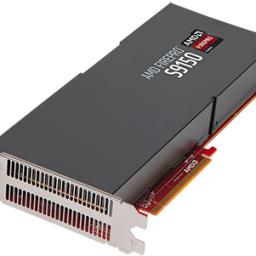 |
by Kevin Normandeau on (#T4PJ)
In the past few years, accelerated computing has become strategically important for a wide range of applications. To gain performance on a variety of codes, hardware developers and software developers have concentrated their efforts to create systems that can accelerate certain applications by significant amount compared to what was previously possible.The post New GPUs accelerate HPC applications appeared first on insideHPC.
|
 |
by staff on (#T33F)
"Looking for the HPC community thought leaders at SC15? You will find many of them at the Intel Community Hub where hourly interactive discussions will feature more than 35 community thought leaders over three-days. Speakers from organizations such as CERN, ANL, LANL, LLNL, TACC, and NERSC, along with updates on the U.S. National Strategic Computing Initiative, a talk from Nielsen on ‘Bridging the Worlds of HPC and Big Data’, and community discussion groups addressing topics on diversity in HPC, lessons learned from many code modernization efforts, the changing landscape of HPC storage, the latest HPC initiatives in Europe, and the latest views from the Lustre* community."The post HPC Thought Leaders Headline Intel Community Hub at SC15 appeared first on insideHPC.
|
 |
by Rich Brueckner on (#T281)
Today ArcaStream and General Atomics introduced Ngenea, the world’s first data-aware cloud storage gateway. Ready for quick deployment, Ngenea seamlessly integrates with popular cloud and object storage providers such as Amazon S3, Google GCS, Scality, Cleversafe and Swift and is optimized for data-intensive workflows in life science, education, research, and oil and gas exploration.The post World’s First Data-Aware Cloud Storage Gateway Coming to SC15 appeared first on insideHPC.
|
 |
by Rich Brueckner on (#T26J)
In a surprise move, Google has open-sourced TensorFlow artificial intelligence software. The powerful machine learning engine is one of Google’s successful experiments and helps the search giant in automated search and analysis.The post Google Open Sources TensorFlow for Machine Learning appeared first on insideHPC.
|
 |
by staff on (#T234)
Today LSU announced the deployment of a POWER8-based supercomputer to advance big data research in Louisiana. Named Delta, the new supercomputer's unique design brings a new way of conducting computational research to LSU. The supercomputer will be housed at the LSU Center for Computation & Technology, or CCT.The post LSU Deploys IBM Power8 Delta Supercomputer appeared first on insideHPC.
|
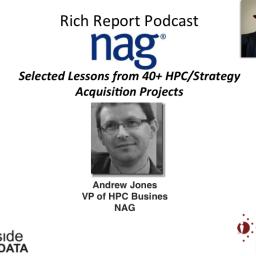 |
by Rich Brueckner on (#T1TD)
In this slidecast, Andrew Jones from NAG discusses the lessons learned from over 40 supercomputing procurements. NAG has announced plans to launch an impartial HPC technology intelligence and analysis subscription service at SC15. "Developed in partnership with Red Oak Consulting, the NAG HPC Technology Intelligence Service will deliver technology insight and risk-reduction to help HPC buyers and users make better decisions and optimize their HPC investments."The post Slidecast: How to Buy a Supercomputer – Lessons Learned from NAG appeared first on insideHPC.
|
 |
by staff on (#T1QQ)
Today eXcellence in IS Solutions (X-ISS) announced plans for European expansion. With details to be unveiled at the SC15, X-ISS will expand its signature ManagedHPC service into the European market.The post X-ISS to Bring ManagedHPC to Europe appeared first on insideHPC.
|
 |
by Rich Brueckner on (#T151)
Austin a great destination for the SC15 conference. In this special guest feature from the Print 'n Fly Guide to SC15, William Wallace describes five things not to miss in Austin.The post Five Things Not to Miss in Austin appeared first on insideHPC.
|
 |
by staff on (#T122)
With SC15 in Austin this year, we all have a lot of good food and entertainment in store. In this special guest feature from the Print 'n Fly Guide to Austin, William Wallace writes that there’s a lot more to this town than just BBQ. Here are the places not to miss!The post A Foodie’s Guide to Restaurants and Entertainment in Austin appeared first on insideHPC.
|
 |
by staff on (#SYZE)
The SC15 Blog has published a listing of Diversity Sessions not to miss. Just a week away, the SC15 conference runs Nov. 15-20 in Austin.The post SC15 Diversity Sessions Coming to Austin appeared first on insideHPC.
|
 |
by Rich Brueckner on (#SYYN)
Brad Chamberlain from Cray presented this talk at the recent Argonne Training Program on Extreme-Scale Computing. "We believe Chapel can greatly improve productivity for current and emerging HPC architectures and meet emerging mainstream needs for parallelism and locality."The post Video: Chapel – Productive, Multiresolution Parallel Programming appeared first on insideHPC.
|
 |
by Rich Brueckner on (#SWS6)
SC15 has produced a handy Smartphone App for IOS and Android platforms. "Navigating the SC15 site from a phone is difficult, so the SC15 app comes in really handy when you're trying to find a booth number on the show floor."The post Smartphone App Keeps You Up to Date on SC15 appeared first on insideHPC.
|
 |
by Rich Brueckner on (#SW30)
Aspen Systems is seeking an HPC Sales Engineer in our Job of the Week.The post Job of the Week: HPC Sales Engineer at Aspen Systems appeared first on insideHPC.
|
 |
by staff on (#STAY)
Today SGI announced that Jorge Titinger, president and CEO of SGI, was named by the Hispanic IT Executive Council to the HITEC 100, a comprehensive list of the top 100 Hispanic executives who excel in their technology careers and are actively involved in HITEC's mission of addressing diversity in information technology.The post SGI’s CEO Jorge Titinger Recognized as Top 100 Hispanic Leader in Technology appeared first on insideHPC.
|
 |
by Rich Brueckner on (#ST3N)
Today the Numerical Algorithms Group (NAG) announced plans to launch an impartial HPC technology intelligence and analysis subscription service at SC15. Developed in partnership with Red Oak Consulting, the NAG HPC Technology Intelligence Service will deliver technology insight and risk-reduction to help HPC buyers and users make better decisions and optimize their HPC investments.The post New NAG Service Helps Supercomputer Buyers Make Smarter Decisions appeared first on insideHPC.
|
 |
by Rich Brueckner on (#SSTQ)
In this video, researchers from Cyfronet in Poland describe Prometheus, their new supercomputer built by Hewlett Packard Enterprise. Comprising more than 1700 servers of HPE Apollo 8000 platform and connected by FDR Infiniband, Prometheus will benefit scientists in the fields of chemistry, physics, astrophysics, biology, energy, nanotechnology and medicine.The post Video: Prometheus Supercomputer from HP Enterprise appeared first on insideHPC.
|
 |
by Rich Brueckner on (#SSQG)
"Spack is designed to support multiple versions and configurations of software on a wide variety of platforms and environments. It was designed for large supercomputing centers, where many users and application teams share common installations of software on clusters with exotic architectures, using libraries that do not have a standard ABI. Spack is non-destructive: installing a new version does not break existing installations, so many configurations can coexist on the same system."The post RCE Podcast: Spack Package Management Tool appeared first on insideHPC.
|
 |
by Rich Brueckner on (#SSMH)
Today the Ethernet Alliance shared details of its recent 25Gb/s technical feasibility event in New Hampshire. With 25Gb/s technologies being driven in part by hyperscale data center and cloud services market needs, the productive event drew industry-wide support and participation. The event produced promising results, with a high percentage of tests exceeding expected requirements of the proposed IEEE 25Gb/s standard, and achieving a success rate of greater than 86 percent for all test cases performed.The post Ethernet Alliance Moves Forward on 25G Technologies appeared first on insideHPC.
|
 |
by staff on (#SSJS)
"Successful startups are the ones who have knowledge and a strong focus on a problem to solve. Knowledge comes from experience and there is no better way to accumulate that than working at one of the HPC facilities in the US or abroad. In fact I participated in this directly, moving to the US to work at a DOE lab. These opportunities still exist but the Labs often find it difficult to compete with Facebook and Google. If you are able to attend SC15 in Austin, you absolutely must visit the booths on the show floor and engage with the staff and seek out opportunities that exist. Again, SC is where the industry meets research and amazing things happen: go make it happen for you!"The post Interview: Brent Gorda from Intel on the Keys to Startup Innovation for HPC appeared first on insideHPC.
|
 |
by MichaelS on (#SQ4M)
Users in HPC environments have requirements for using a cloud provider that are different than typical enterprise applications. Learn about the key considerations for ensuring maximum performance for running HPC applications in the cloud.The post Critical Requirements for HPC in the Cloud appeared first on insideHPC.
|
 |
by staff on (#SQ10)
Researchers at TACC have developed a new tool to analyze bigger datasets using supercomputers and machine learning algorithms. Called NOMAD, the tool can pull insights from data much faster than other current state-of-the-art tools. It is also able to explore datasets, including some of the largest available, that break other leading software.The post TACC Speeds Big Data Analytics with Nomadic Computing appeared first on insideHPC.
|
 |
by Rich Brueckner on (#SPRF)
Today Cycle Computing announced that their CTO, Rob Futrick will be the Keynote speaker at DataCloud 2015, the 6th International Workshop on Data Intensive Computing in the Clouds. The event takes place Nov. 15 in conjunction with SC15 in Austin. In his talk, Futrick will pose the question, “Why would you NOT use public clouds for your big compute workloads?â€The post Cycle Computing’s Rob Futrick to Keynote DataCloud 2015 in Austin appeared first on insideHPC.
|
 |
by staff on (#SP8M)
"With a differentiated strategy, sufficient investment, and political will, Europe has what it takes to be a global player and to achieve this ambitious goal. We believe that, with a common effort by all public and private actors in HPC – including EU member states, industry, academia, and the European Commission – Europe can make it happen."The post How to Move HPC Forward in Europe appeared first on insideHPC.
|
 |
by Rich Brueckner on (#SP74)
Today DDN announced that the University of Miami’s Center for Computational Science (CCS) has deployed high-performance, DDN GS12K scale-out file storage to speed scientific discoveries and boost collaboration with researchers around the world. CCS maintains one of the largest centralized academic cyberinfrastructures in the country, which fuels vital and critical discoveries in Alzheimer’s, Parkinson’s, gastrointestinal cancer, paralysis and climate modeling as well as marine and atmospheric science research.The post DDN Storage Speeds Genome Sequencing at University of Miami appeared first on insideHPC.
|
 |
by staff on (#SP50)
The EU-funded DEEP Project has unveiled their innovative HPC platform: a 500 TFlop/s prototype system that implements a Cluster-Booster concept that has a lot in common with a turbocharged engine. The prototype operates with a full system software stack and programming environment engineered for performance and ease of use.The post DEEP Project Unveils 500 Teraflop Prototype appeared first on insideHPC.
|
 |
by MichaelS on (#SP2B)
Drug discovery has accelerated with the advent of high performance computing and new algorithms. "A structural bioinformatics algorithm, eFindSuite, can be used to demonstrate how moving the code to a highly parallel implementation can speed up the computation, by using both the Intel Xeon processor and the Intel Xeon Phi coprocessor. eFindSuite is implemented in both Fortran 77 and C++."The post Accelerated Drug Discovery with Intel Xeon Phi appeared first on insideHPC.
|
 |
by Rich Brueckner on (#SNEN)
Today NERSC announced a collaboration with UC Berkeley’s AMPLab and Cray to design large-scale data analytics stacks. "Analytics workloads will be an increasingly important workload on our supercomputers and we are thrilled to support and participate in this key collaboration,†said Ryan Waite, senior vice president of products at Cray. “As Cray’s supercomputing platforms enable researchers and scientists to model reality ever more accurately using high-fidelity simulations, we have long seen the need for scalable, performant analytic tools to interpret the resulting data. The Berkeley Data Analytics Stack (BDAS) and Spark, in particular, are emerging as a de facto foundation of such a toolset because of their combined focus on productivity and scalable performance.â€The post Cray, AMPLab, NERSC Collaborate on Spark Performance for HPC Platforms appeared first on insideHPC.
|
 |
by Rich Brueckner on (#SK3T)
In this video, Justin Baba from the University of Tennessee and Oak Ridge National Laboratory describes how HPC transforms medical diagnostic imaging. “A lot of studies have been published on the impact of detecting or tracking the polarization of photons,†Baba says. “But there isn't much understanding of what is actually occurring as these photons are scattering and propagating through the media. We have captured step by step what is taking place at each scattering event and the effects on the photons’ properties due to a scattering event. So we are able to elucidate what is already out there in the literature.â€The post Video: HPC Transforms Diagnostic Medical Imaging appeared first on insideHPC.
|
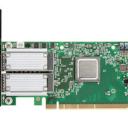 |
by staff on (#SJVQ)
Today Mellanox announced that IBM has selected the company’s ConnectX-4 EDR InfiniBand adapters and EDR 100Gb/s IB switch systems for their new Power Systems LC line of servers designed for cloud environments and high performance cluster deployments and infused with OpenPOWER-based innovations. The technology will be utilized in the servers and high performance computing clusters as a part of an open architecture model which will feature technology from IBM, Mellanox and several other members of the OpenPOWER Foundation.The post Mellanox EDR InfiniBand Speeds OpenPOWER Platforms appeared first on insideHPC.
|
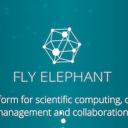 |
by Rich Brueckner on (#SJP5)
Today the good folks at FlyElephant announced support for R, Python, and public API for the participants of its beta testing program.The post FlyElephant Startup Announces Support for R, Python, and Public API appeared first on insideHPC.
|
 |
by staff on (#SJMA)
Today DDN announced plans to refresh their storage product portfolio at SC15 in Austin. "With massively scalable technology able to outpace the performance requirements and growth of Enterprise Big Data while enabling HPC users to achieve Exascale, DDN will introduce revolutionary products and demonstrate the staggering 3x to 10x performance increase real-world customers achieve when they migrate to DDN environments."The post DDN to Refresh Storage Product Portfolio at SC15 appeared first on insideHPC.
|
 |
by Rich Brueckner on (#SJFG)
In this special guest feature from the Print'n Fly Guide to SC15 in Austin, Scot Schultz from Mellanox writes that a new era of Co-Design will pave the way to Exascale. "Exascale computing will undoubtedly include three primary concepts: heterogeneous systems, direct communication through a more sophisticated intelligent network, and backward/forward compatibility. Co-Design includes these concepts in order to create an evolutionary architectural approach that will enable Exascale-class systems."The post Paving the Road to Exascale with Co-Design Architecture appeared first on insideHPC.
|
 |
by Rich Brueckner on (#SJ08)
Today Supermicro announced World Record STAC-A2 performance. Announced at the STAC Summit, Supemicro beat the record with their SYS-1028GR-TR server supporting dual Intel Xeon Haswell EP processors and dual Intel Xeon Phi 7120P coprocessors.The post Supermicro World Record STAC-2 Performance with Intel Xeon Phi appeared first on insideHPC.
|
 |
by Rich Brueckner on (#SFZ0)
Today the UberCloud announced a complete management and execution environment for UberCloud Application Containers powered by Univa Grid Engine Container Edition. Now, popular commercial and open source technical applications are available in ready-to-execute packages of software designed to deliver the tools that engineers need to complete their task in hand.The post UberCloud Delivers CAE as a Service with Univa Grid Engine Container Edition appeared first on insideHPC.
|
 |
by Rich Brueckner on (#SFNN)
In this video from the SC15 HPC Matters series, Ryan Quick, Principal Architect for Advance Technologies at Paypal, talks about how HPC transforms online payment transactions. "IDC estimates that PayPal has saved more than $700 million by moving up to HPC in a very innovative way for real-time and predictive fraud analysis," said Earl Joseph of IDC. "High performance data analysis – big data using HPC – is the fastest growing part of the HPC market and is attracting many commercial users. "The post Video: HPC Matters at PayPal appeared first on insideHPC.
|
 |
by Rich Brueckner on (#SFCK)
Today Bright Computing announced plans to release several updates and enhancements to its most popular management software solutions at SC15, which takes place November 15-20, 2015, in Austin, Texas. The updates will include more than a dozen features that simplify OpenStack deployment, add built-in integration functionality, and greatly improve Big Data integration, including support for the latest releases from Apache, Cloudera, Hortonworks, and Pivotal.The post Bright Computing to Update Cluster Management Software at SC15 appeared first on insideHPC.
|
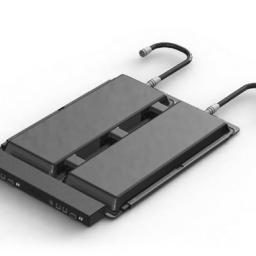 |
by Rich Brueckner on (#SF94)
Today LiquidCool Solutions (LCS) announced plans to launch its newest technology - the Clamshell - at SC15 in Austin. As a rack-based server, the Clamshell is low-cost and flexible enough to meet Open Compute Project design standards.The post LiquidCool Solutions Launches Newest Technology at SC15 appeared first on insideHPC.
|
 |
by Rich Brueckner on (#SF62)
Today the European Commission announced a partnership agreement with the Human Brain Project (HBP), a key EU research project aiming to better understand how the human brain works. "Understanding the human brain is one of the greatest challenges facing 21st century science," said Günther H. Oettinger, European Commissioner for Digital Economy and Society. "Major challenges like these can only be tackled at European level."The post European Commission Funds Human Brain Project Through 2020 appeared first on insideHPC.
|
 |
by staff on (#SETQ)
VDI or Virtual Desktop Infrastructure helps companies save money, time and resources. Instead of large bulky machines on every desk in the office, companies can connect multiple workstations to a single computer using thin clients. Instead of replacing individual desktops every year, companies only have to replace thin clients every 5 years. And when it comes time to do updates, the IT staff updates the one computer instead of spending time updating every individual workstation.The post GPUs in Virtual Desktop Infrastructure Solutions appeared first on insideHPC.
|
 |
by Rich Brueckner on (#SEMQ)
SC15 in Austin is world’s largest gathering of HPC professionals, and the smart money is on the organizations that leverage the show for their own gatherings, meetups, special booth sessions, and user groups. Here is a roundup of special events not to miss.The post Ancillary Event Lineup for SC15 in Austin appeared first on insideHPC.
|
 |
by Rich Brueckner on (#SEFA)
The 2nd IEEE International Workshop on High-Performance Interconnection Networks in the Exascale and Big-Data Era has issued its Call for Papers. The HiPINEB event will take place March 12, 2016 in Barcelona in conjunction with the IEEE HPCA 2016 conference.The post HiPINEB 2016 in Barcelona Issues Call for Papers appeared first on insideHPC.
|
 |
by staff on (#SCCB)
Today the NSF announced major awards totaling more than $5 million to support four regional Data Hubs organized by some of the top universities and Big Data researchers in the country.The post NSF Funds Regional Data Hubs appeared first on insideHPC.
|
 |
by Rich Brueckner on (#SBSE)
In the video, Ed Seidel from NSCA testifies at a House hearing on the Networking and Information Technology Research and Development (NITRD) Program. NITRD provides a framework in which many Federal agencies come together to coordinate their networking and information technology (IT) research and development (R&D) efforts.The post Video: NCSA’s Ed Seidel Testifies on the Networking and Information Technology Research and Development Program appeared first on insideHPC.
|
 |
by Rich Brueckner on (#SBPT)
PRACEdays16 has issued their Call for Participation. Taking place May 10-12, 2016 in Prague, the conference will bring together experts from academia and industry who will present their advancements in HPC-supported science and engineering.The post PRACEdays16 Issues Call for Participation appeared first on insideHPC.
|
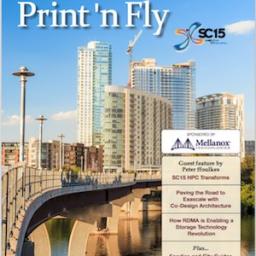 |
by staff on (#SBKT)
In this special guest feature from the Print'nFly Guide to SC15 in Austin, Peter ffoulkes from OrionX looks at how HPC Transforms. "If we thought the last five years were disruptive, we may not have seen anything yet, and in many ways the HPC community will continue to lead that transformation, even if it does not always receive recognition for that leadership. The general enterprise market shift towards a data-centric focus, based upon “big-dataâ€, the impending deluge of sensor data from “The Internet of Thingsâ€, and real-time analytics using in-memory databases could be the best thing that has happened to the HPC community in decades."The post SC15 HPC Transforms – but how, what, where, when, why and for whom? appeared first on insideHPC.
|
 |
by Rich Brueckner on (#SBFQ)
Today Mellanox announced the acceptance of its 10GbE and 40GbE switch systems by the Open Compute Project (OCP).The post Mellanox Open Ethernet Switches Accepted By Open Compute Project appeared first on insideHPC.
|
 |
by Rich Brueckner on (#S8XP)
Oak Ridge National Laboratory has opened up submissions for their ORNL Challenge Program. Designed to propel the careers of bright young minds in computational science, the challenge program offers college students 10-week paid internships at Oak Ridge National Lab, DOE’s largest multi-program science and energy laboratory.The post Students: Apply for the ORNL Challenge Program appeared first on insideHPC.
|
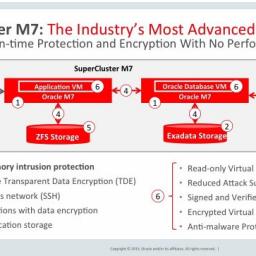 |
by Rich Brueckner on (#S8TP)
"The SPARC M7 incorporates silicon-embedded advancements primarily in two areas: security and performance. First, the SPARC M7 accelerates data encryption through “cryptographic units†integrated in each of its 32 cores. And by incorporating very high-performance encryption in the chip, Fowler says, the M7 is able to not only secure data quickly but also devote substantial processor resources to additional projects, resources that otherwise would be occupied encrypting data at the software layer."The post Video: How the SPARC M7 Builds Security into Silicon appeared first on insideHPC.
|